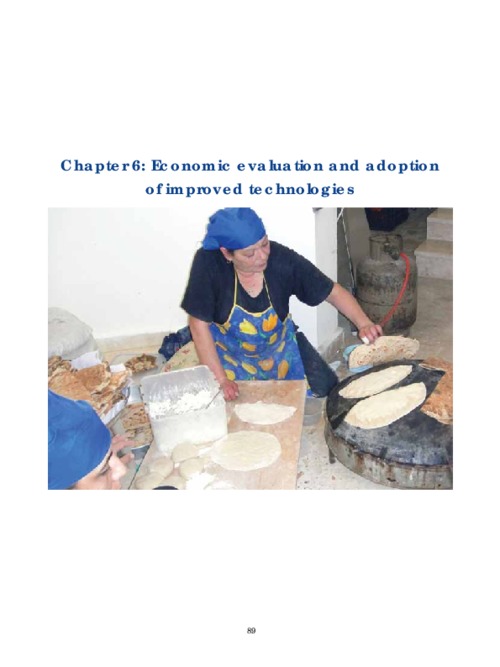Location
The International Center for Agricultural Research in the Dry Areas (ICARDA) was established in 1977. It is one of 15 such centers supported by the CGIAR. ICARDA’s founding mandate to promote agricultural development in the dry areas of developing countries remains highly relevant today.
ICARDA works with a tight focus on the problem-solving needs of resource-poor farmers, achieving this through the in-field delivery of its research outputs. Although global food production has increased by 20 per cent in the past decade, food insecurity and poverty remain widespread, while the natural resource base continues to decline.
International research centers such as ICARDA, which have helped drive previous improvements, continue to deliver new technologies to support sustainable growth in agriculture, and crucially, to work with a wide range of partners to accelerate the dissemination of these technologies.
ICARDA’s biggest strength is its staff – 600 highly skilled men and women from 32 countries. Our research and training activities cover crop improvement, water and land management, integrated crop-livestock-rangeland management, and climate change adaptation.
Other interventions include:
- Water harvesting - supplemental irrigation and water-saving irrigation techniques
- Conservation agriculture methods to reduce production costs and improve sustainability
- Diversification of production systems to high-value crops – horticulture, herbal and medicinal plants
- Integrated crop/rangeland/livestock production systems including non-traditional sources of livestock feed
- Empowerment of rural women – support and training for value-added products.
The ICARDA genebank holds over 135,000 accessions from over 110 countries: traditional varieties, improved germplasm, and a unique set of wild crop relatives. These include wheat, barley, oats and other cereals; food legumes such as faba bean, chickpea, lentil and field pea; forage crops, rangeland plants, and wild relatives of each of these species.
ICARDA’s research portfolio is part of a long-term strategic plan covering 2007 to 2016, focused on improving productivity, incomes and livelihoods among resource-poor households.
The strategy combines continuity with change – addressing current problems while expanding the focus to emerging challenges such as climate change and desertification.
We work closely with national agricultural research systems and government ministries. Over the years the Center has built a network of strong partnerships with national, regional and international institutions, universities, non-governmental organizations and ministries in the developing world and in industrialized countries with advanced research institutes.
THE ‘DRY AREAS’
Research and training activities cover the non-tropical dry areas globally, using West Asia, North Africa, Central Asia and the Caucasus as research platforms to develop, test, and scale-out new innovations and policy options.
Dry areas cover 41 per cent of the world’s land area and are home to one-third of the global population. About 16 per cent of this population lives in chronic poverty, particularly in marginal rainfed areas. The dry areas are challenged by rapid population growth, frequent droughts, high climatic variability, land degradation and desertification, and widespread poverty. The complex of relationships between these challenges has created a "Poverty Trap."
Members:
Resources
Displaying 346 - 350 of 431Socioeconomic assessment of improved water management practices in Egypt’s irrigated agriculture
The objectives of this report are to evaluate and test, with community participation; the benchmark water management options which sustainably improve water productivity, net return per water unit, and optimize water use. The strategies evaluated have to be economically viable, socially acceptable, and environmentally sound in the three different agricultural eco-systems.
Community-based use of grey-water in home farming
With annual renewable water resources of less than 150 m3 per capita, Jordan is one of the most water scarce countries of the world. The demand for freshwater resources has been on the increase in the urban sector due to the economic development and population growth. The limited amount of water available for agriculture necessitates the use of non-conventional water resources, such as gray water, as an alternate option.
Improved water and land productivities in the saline areas of the Nile Delta
The study was conducted in El-Serw (New Alexandria) located about 32 km south of Damietta, Damietta Governorate, El-Manzala Lake is to the east, Dakahlia Governorate lies to the south, and to the west are El-Sharqawia canal and the Nile River.
The selected site has the general characteristics of marginal lands:
• Drainage system problems;
• High water table;
• Increased soil salinity;
• Seawater intrusion;
• Pollution due to extensive use of chemicals; low water quality;
• Available water increases relatively in winter;
Enhancing soil fertility and irrigation management in the new lands
The new lands are represented by the El- Bustan area. The soils of the site are mostly sandy with low fertility and relatively low water holding capacity and crops are grown exclusively under irrigation using modern irrigation systems.
Economic evaluation and adoption of improved technologies
In this study, an economic evaluation of water-use efficiency technologies proposed and tested by the agronomic team in the Tadla Irrigated Perimeter was carried out. To capture climatic variability, the analysis was conducted during two contrasting years (dry and wet). Total annual rainfall was 357 mm in 2005/06 (wet year) and 296 mm in 2006/07 (dry year). During the first year, precipitation was well distributed throughout the season. However, the second year was wet at the beginning, dry in the middle and very wet at the end of the season.







